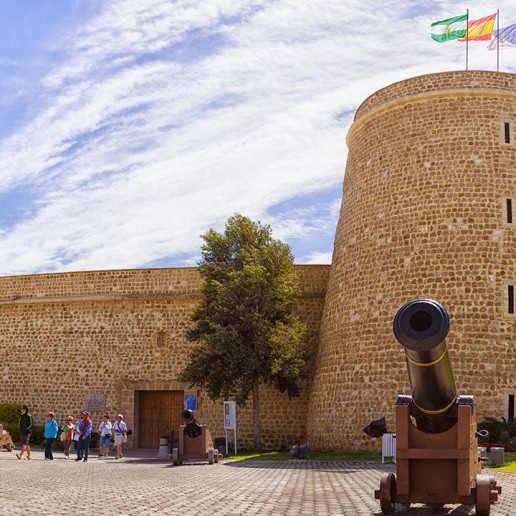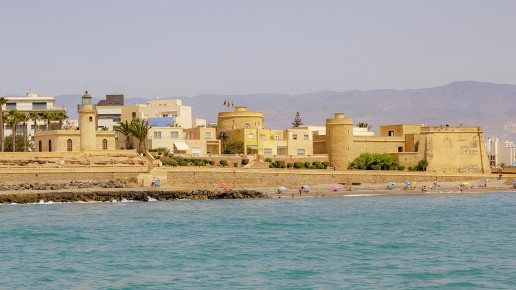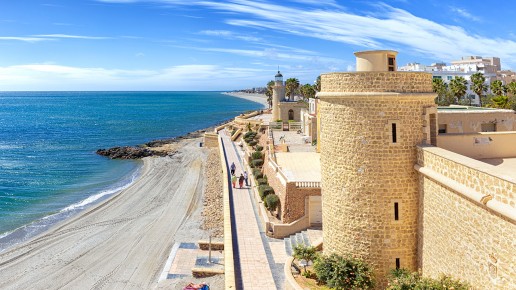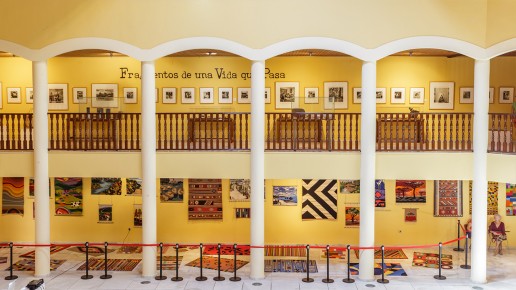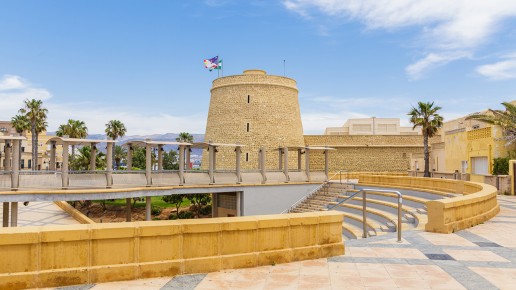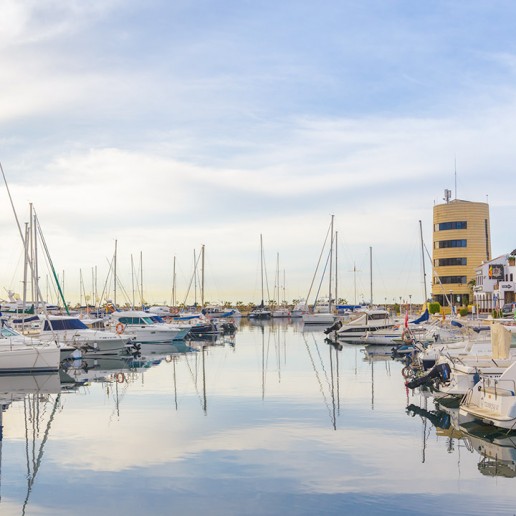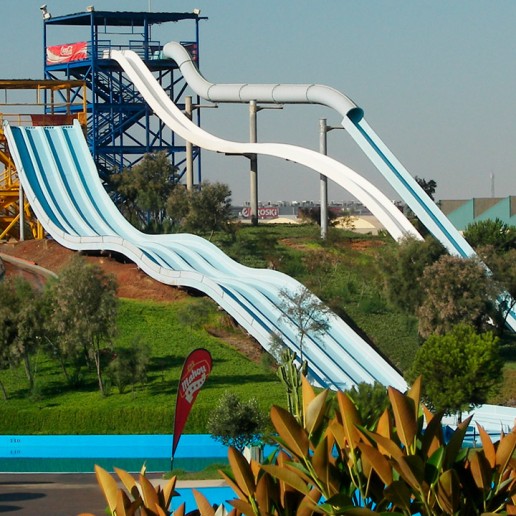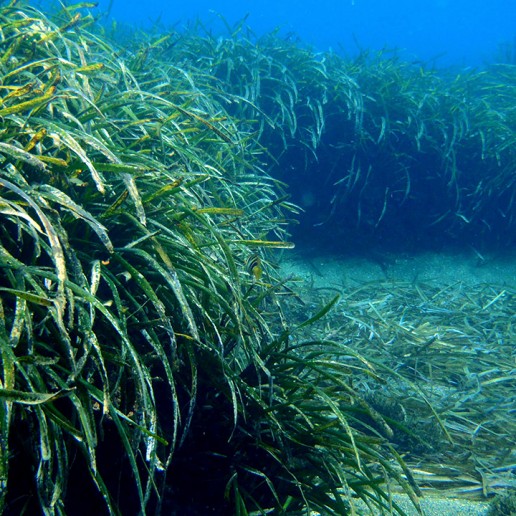Castillo de Santa Ana
It was in the early sixteenth century, when at the initiative of the city of Almeria, a tower that guarded the production and the shipment of salt in the salt mines was built; The tower suffered various vicissitudes, however, the strategic value of its location as pier in the Bay of Almería finally persuaded the crown to give this place a square floor castle, with circular towers unequal in their end, except the one that was later occupied by a bulwark, whose profile in the late sixteenth century is unknown.
Along the XVII century the fortress of Roquetas succumbed, not only because of the earthquakes, and the attacks of the fleet of Turkish ships, but also due to the economic situation of the crown that lacked the capacity to use resources in its reconstruction, remaining destroyed all the fortifications, until the mid-eighteenth century.
The eighteenth century was the time of the great restoration of the castle of Roquetas with important works made around 1710, as part of the War of Succession although we do not know precisely its nature.
In the nineteenth century the fortress was ruined by the earthquake of 1804, without been restored from that date, although in its vicinity provisional batteries were provided whenever necessary.
In the twentieth century, the tourist vocation of Roquetas de Mar was consolidated. It was declared an area of National Tourist Interest and the population interest in its history was spread; a fact that probably was detected by the borough council which, on September 17, 1968, addressed to State Assets of Ministry of Finance to request the free transfer of the fortress.
The reconstruction of the fortress was completed in 2003, and to date it has hosted the works of great artists of provincial and national levels. Its ultimate goal was the consolidation as Museum within the Andalusian Museum Network of the Andalusian Regional Government.
The castle has numerous showrooms in which they usually show paintings, photographs and other possibilities. Besides, conferences and talks have been celebrated in its interior. We also highlight the inner courtyard of great beauty, where sculptures are shown and where concerts and performances are also hold, especially in the summer months.
The views offered by the towers thereof are another attraction of this historic building that is part of a cultural triangle that the town council wanted to have in this area of the municipality and in which an auditorium outdoors and the Lighthouse are also present.
If you want to know more about the Castillo de Santa Ana enters your web here.
LOCATION MAP
MORE PLACES TO VISIT
You may also like








